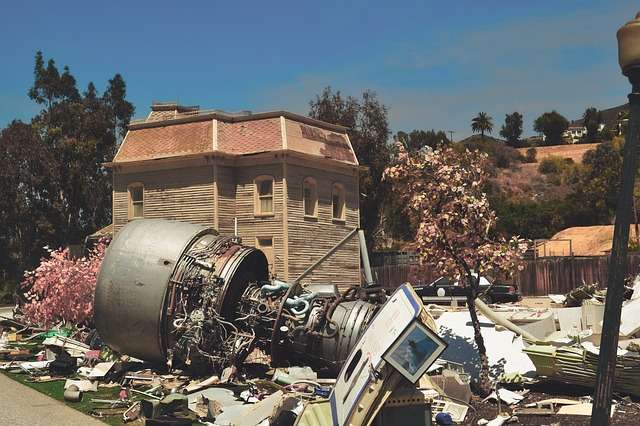Engineering disasters in the twentieth century
Engineering disasters in the twentieth century,
Engineers lead humanity on a path to great achievement,
pushing them to the limits of scientific invention and exploration.
But from time to time they prove that they are human beings who are prone to making huge mistakes.
Of course, engineering errors are not like a daily business issue,
from nuclear reaction explosions to sinking large ships to explosions of space exploration rockets.
And when they fail, failure is widespread, and while we can certainly learn and grow from our mistakes,
some of the mistakes on this list have had lasting and devastating effects.

1. Chernobyl
Some people have not heard of the worst nuclear disaster in human history,
which is second only to the failure of the Fukushima reactor in terms of size.
On April 26, 1986, a structurally defective reactor at the Chernobyl nuclear power plant exploded.
The accident that destroyed the Unit 4 reactor occurred during a maintenance shutdown,
which provided an ideal opportunity for testing to determine if the turbine would continue to provide power to the system,
to run the cooling water pumps until the emergency power supply was connected.
Unfortunately, the test, which was intended to improve the plant’s non-nuclear operational capability,
was conducted without adequate safety precautions.
Engineering disasters in the twentieth century
Operational errors created potentially catastrophic conditions for disasters that already existed due to a lack of proper communication
and coordination between the personnel performing the test and the personnel responsible for reactor safety.
These conditions led to a careless violation of minimum operating standards during testing,
and conditions became increasingly unstable in the reactor.
This eventually caused the destruction of many of the fuel assemblies,
which in turn increased the pressure in the reactor, loosening the 1,000-ton support plate.
The disastrous result was the release of huge amounts of radiation into the atmosphere,
and it spread over a large area of western Soviet Union and Eastern Europe.
The subsequent evacuation involved the displacement and resettlement of 350,400 people from the most polluted areas of Belarus, Ukraine and Russia.
To this day, pripyat remains uninhabitable and people continue to suffer devastating after-effects,
including more than 30,000 premature deaths from cancer.
After the tragedy, there were many lessons to be learned,
and those lessons have been applied to safety at Western nuclear plants ever since.
Nowadays, Soviet-designed reactors show a significant improvement in safety,
not only because of investments to improve their designs,
but because of the safety culture that has emerged from this and other experiments.

2. Bhopal
In 1984, a toxic gas was released at Union Carbide’s pesticide plant in Bhopal, India.
Reports suggest that the combination of a number of substandard conditions,
constant breach of safety regulations, administrative negligence,
and general disregard for safety ultimately caused what is considered the worst industrial accident in history.
The chain of events began when water somehow entered the methyl isocyanate (MIC) tank,
resulting in an exothermic reaction.
The reaction worsened seriously due to a variety of factors, including iron from corrosion of steel pipes.
The pressure in the tank then doubled in just half an hour,
but was considered a failure of the reading instrument by various employees.
Thirty minutes passed and employees began to feel the effects of exposure to the MIC gas,
and efforts were made to find the leak.
Although the location of the leak was identified, the decision was made to address the matter after the tea break.
By the time the tea break ended, the tank was in critical condition and the emergency relief valve had exploded.
This resulted in the toxic MIC gas being released directly into the atmosphere.
In addition, two of the three safety devices present to mitigate the release of the deadly gas into the atmosphere were either inappropriately sized, malfunctioning, or invalid.
About 2,259 people died instantly, and 11,000 deaths occurred after the disaster.
Although 25 years have passed since the event, the land around Bhopal is still harmful to animals and humans alike to this day.

3. Titanic
A ship over 800 feet long and weighing 46,000 tons, it was the largest ship ever built in 1912.
Although its design succeeded in impressing the masses from an aesthetic point of view,
the many factors that contributed to its rapid sinking, was a matter of analysis and investigation by many engineering researchers.
The ship’s physical failures and design flaws led researchers to believe that safety may not have been the primary focus during its construction.
For example, one row of safety boats has been removed from the original design to allow more space and better visibility for passengers with first-class berths.
More than half of the 2,200 people on board the Titanic suffered the consequences of those changes to the hull.
It only took 180 minutes after the ship hit the iceberg, when it was traveling at a speed of 22 knots,
for the ship to sink to the bottom of the Atlantic Ocean.
Five of the weatherproof cabins were completely submerged,
a serious malfunction possibly due to the reduced height of the bulkheads to provide better accommodation for the first-class common rooms.
The researchers also attribute other reasons for this failure, such as the high sulfur content in the steel and low water temperature,
which causes the steel structure and the bolts to severely damage the cabins’ flood containment capacity,
thus speeding up the sinking process.
Currently all of these considerations are applied to large shipbuilding as cautionary measures,
and several safety regulations have been put in place since then to avoid similar disasters from happening again.







